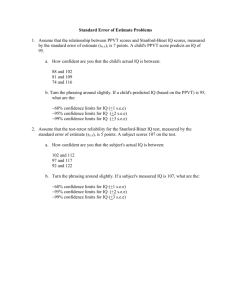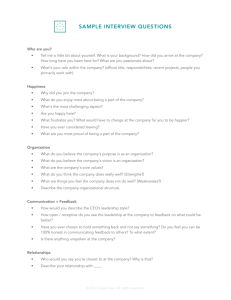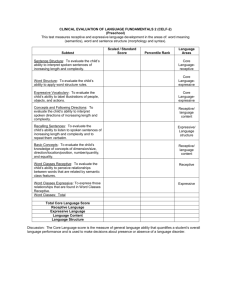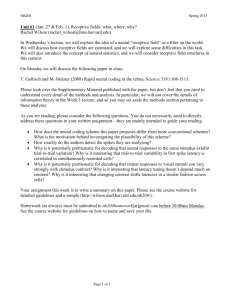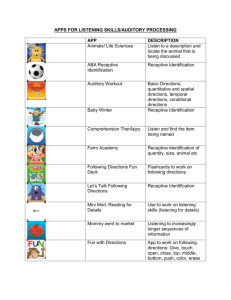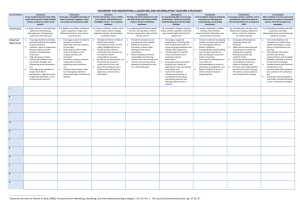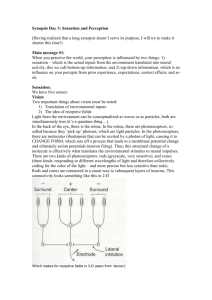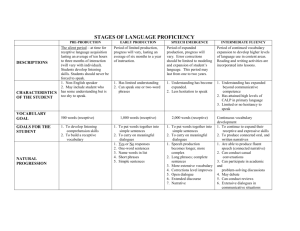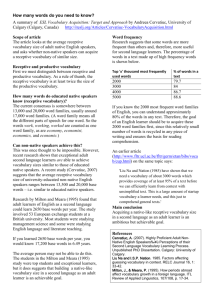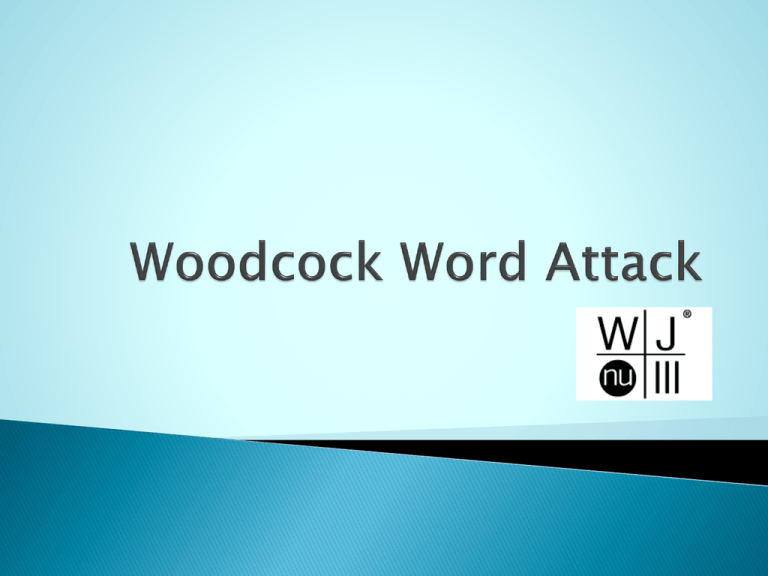
reading nonsense words (e.g., plurp, fronkett)
aloud to test phonetic word attack skills.
Word Attack measures skill in applying
phonic and structural analysis skills to the
pronunciation of unfamiliar printed words.
If the student scores 0 or 1 on the word
identification, a score of 0 can be recorded
for Word Attack
Begin with the 2 sample items; then
proceed to item 1
Study the pronunciation guide (p. 28-29)
The student must answer within 5 seconds
The “word” must be read naturally –not
sounded out for the final reading
WRITE what the student says
The Peabody Picture Vocabulary Test or the
PPVT was first launched in 1959 by two
pioneers in the field of special education,
Llyod M. Dunn and Leota M. Dunn
Quickly evaluate receptive vocabulary with a test
that requires no reading or writing
Monitor progress using two parallel forms
Directly compare receptive and expressive
vocabulary when you also administer the EVT-2
Move immediately into evidence-based
interventions using those embedded directly into
and linked into the ASSIST software
Meet guidelines for universal screening,
identifying strengths and weaknesses, and
diagnostic testing in an RTI environment
The Peabody Picture Vocabulary Test is one of
the most commonly used assessment tests
that measure verbal ability in standard
American English vocabulary. It measures the
receptive processing of examinees from 2 to
over 90 years old
The administration of PPVT outs certain limits
on the test. It cannot be used on people who
suffer from blindness and/or deafness.
Psychologists may also need to consider
other types of verbal ability assessments
when measuring the intelligence of adults
who have severe to profound mental
retardation because a considerable number of
the pictures include images of children.
http://www.michigan.gov/documents/mde/P
PVT-IV_training_10-08_258864_7.pdf

